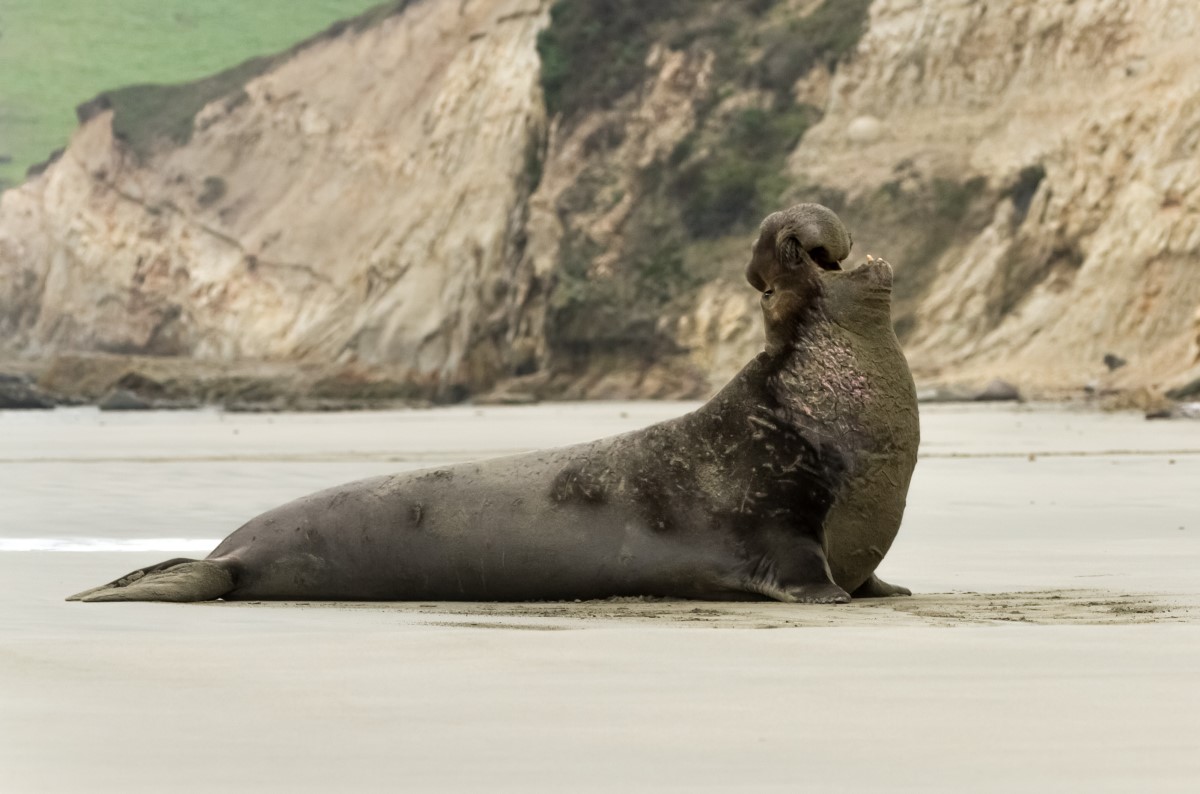
Elephant seal colony declines one year after avian flu outbreak
On Nov. 11, 2024, a study published in the journal Nature Communications and co-led by UC Davis and the National Institute of Agricultural Technology (INTA) in Argentina provides evidence of mammal-to-mammal transmission during the 2023 outbreak. It found that H5N1 spread efficiently among marine mammals. The outbreak in elephant seals was a stepping stone amid the first transnational spread of the virus in these species, extending across five countries in southern South America.
The sounds of barking elephant seals are again in the air along the breeding grounds of Península Valdés, Argentina—but it’s quieter. Almost exactly a year after a massive outbreak of H5N1 highly pathogenic avian influenza killed more than 17,000 elephant seals, including about 97% of their pups, scientists estimate that only about a third of the elephant seals normally expected here returned.
The study’s genomic analysis further found that, upon entering South America, the virus evolved into separate avian and marine mammal clades, which is unprecedented.
“We’re showing the evolution of H5N1 viruses that belong to genotype B3.2 over time since their introduction in South America in late 2022,” said virologist and co-leading author Agustina Rimondi of INTA and currently also with Robert Koch Institute. “This virus is capable of adapting to marine mammal species, as we can see from the mutations that are consistently found in the viruses belonging to this clade. Very importantly, our study also shows that H5 marine mammal viruses are able to jump back to birds, highlighting the need for increased surveillance and research cooperation in the region.”
So far, no elephant seals have tested positive this breeding season. Yet lingering questions remain from last year’s outbreak. For instance, scientists do not know if the virus was transmitted by aerosol, saliva, feces or other means, or if surviving animals have built resistance via protective antibodies. Such questions remain highly relevant.
By February 2023, highly pathogenic avian influenza was detected in Argentina for the first time, affecting poultry primarily in inland central Argentina for five months. By August 2023, after two months of no outbreaks in poultry, the virus appeared in sea lions at the tip of South America off the Atlantic coastline of Tierra del Fuego island. From there, it moved swiftly northward, with deadly results, first for marine mammals and later for seabirds.
The authors said continued monitoring and investigation is critically important to better understand the virus’ evolution. Its increased flexibility to adapt to new hosts could have global consequences for human health, wildlife conservation and ecosystems.
Tags:
Source: American Association for the Advancement of Science
Credit:
